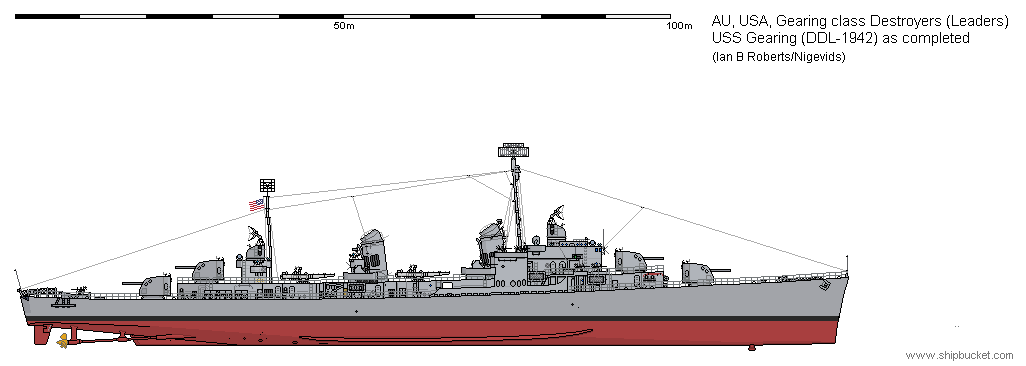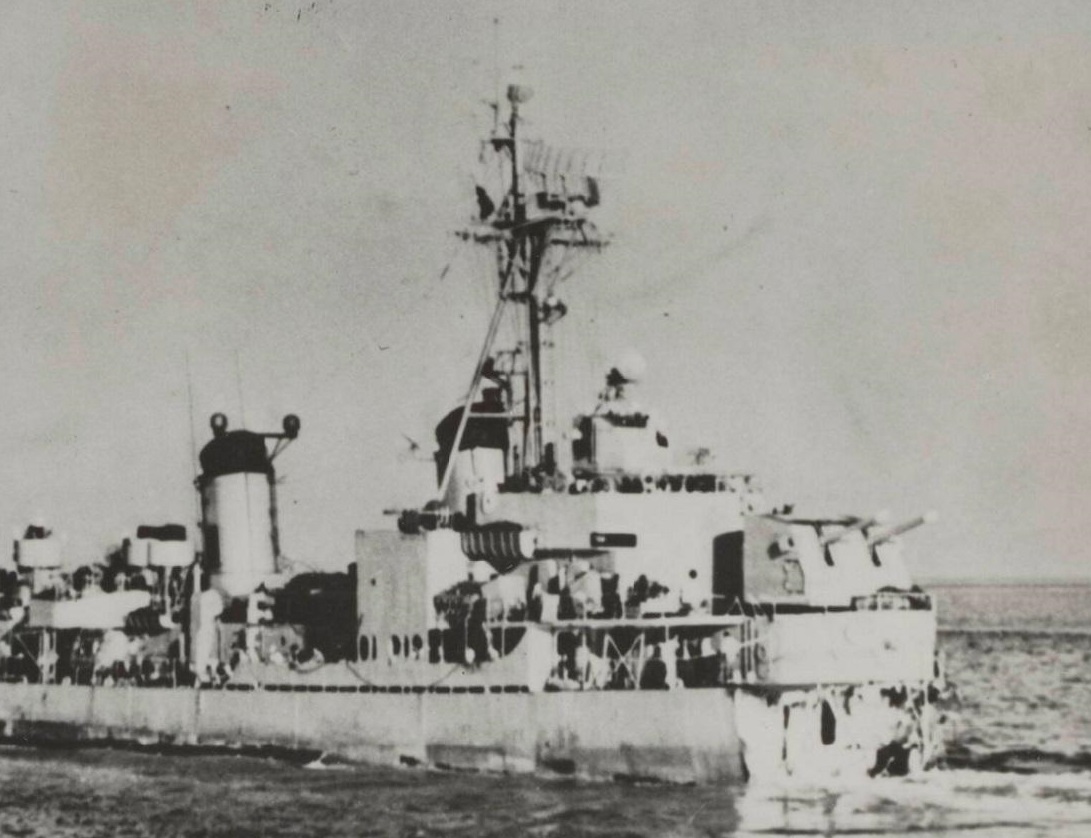1939 and the US Navy could see war coming. They were sure that they would get dragged into another European war at some stage. The Japanese were also sending all of the wrong signals to expect peace with them to last much longer. The Navy had BuShips designing the ships that would fight a two Ocean war. It was felt that the Navy's involvement in the European Theater would be minimal compared to what would be needed in the Pacific. A Task Force centered on the Ranger with a couple of the older battleships would suffice for most occasions while ships could be transferred from the Pacific for major events (Torch, Italy, D-Day) as required. So what was needed for the Pacific? Large carriers, which the Essex design covered, fast battleships which the Iowa class covered, Heavy Cruisers which the Baltimore class covered, Benson class destroyers, and to act as large AA escorts and Destroyers/Destroyer Leaders would be the bigger Gearing class. One of the reasons to make them big was to enhance the range of the ships.

The Gearing class were knocking on the door of light cruiser size. Something the US Navy had not built, preferring the bigger 8" heavy cruisers. So the Gearing class did double duty. The design showed a large destroyer with two twin 5"/38cal turrets fore and aft. The ships of the class being completed during 1943 ran into the 'Steel shortage' where supply could not keep up with demand. It was decided that to get as many of these ships to sea during this shortage that 'X' turret would be replaced with an extra quad 40mm. From 1944 onwards the newly built four turret ships lost one of the quintuple sets of torpedoes due to all of the additions of radar and other topweight. This was retrofitted to earlier member of the class (that needed it) during their normal refit cycles.
.png)
The 44 six gun versions were quite popular, as they had no need to lose the set of torpedoes, the other ships did, as they had already lost the topweight necessary to keep both sets. The whole class proved popular both in the USN where they served, in various roles, through to the 1970's. Overseas purchasers liked them too. Big ships they lasted through to the 1980's and some even later. One of the reasons these ships could go for so long was the millions of shells available for the 5"/38cal guns. Warehouses full of them scattered all over the world.
